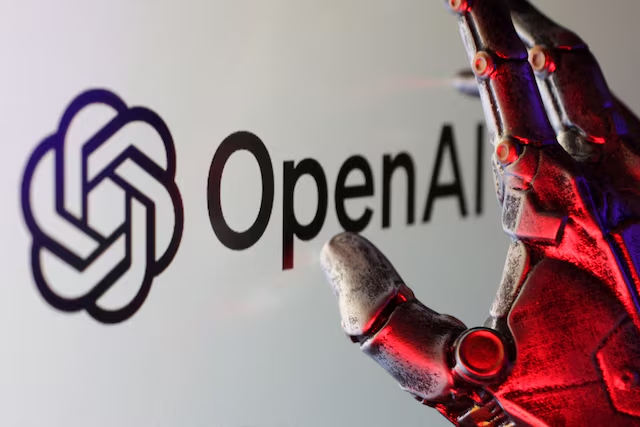SAN FRANCISCO, Aug 6 (Reuters) – OpenAI’s GPT-5, the latest installment of the AI technology that powered the ChatGPT juggernaut in 2022, is set for an imminent release, and users will scrutinize if the step up from GPT-4 is on par with the research lab’s previous improvements.
Two early testers of the new model told Reuters they have been impressed with its ability to code and solve science and math problems, but they believe the leap from GPT-4 to GPT-5 is not as large as the one from GPT-3 to GPT-4. The testers, who have signed non-disclosure agreements, declined to be named for this story.
OpenAI declined to comment for this story.
GPT-4’s leap was based on more compute power and data, and the company was hoping that “scaling up” in a similar way would consistently lead to improved AI models.
But OpenAI, which is backed by Microsoft (MSFT.O), opens new tab and is currently valued at $300 billion, ran into issues scaling up. One problem was the data wall the company ran into, and OpenAI’s former chief scientist Ilya Sutskever said last year that while processing power was growing, the amount of data was not.
He was referring to the fact that large language models are trained on massive datasets that scrape the entire internet, and AI labs have no other options for large troves of human-generated textual data.
Apart from the lack of data, another problem was that ‘training runs’ for large models are more likely to have hardware-induced failures given how complicated the system is, and researchers may not know the eventual performance of the models until the end of the run, which can take months.
OpenAI has not said when GPT-5 will be released, but the industry expects it to be any day now, according to media reports. Boris Power, head of Applied Research at OpenAI, said in an X post on Monday: “Excited to see how the public receives GPT-5.”
“OpenAI made such a great leap from GPT-3 to GPT-4, that ever since then, there has been an enormous amount of anticipation over GPT-5,” said Navin Chaddha, managing partner at venture capital fund Mayfield, who invests in AI companies but is not an OpenAI investor. “The hope is that GPT-5 will unlock AI applications that move beyond chat into fully autonomous task execution.”
‘TEST-TIME COMPUTE’
Nearly three years ago, ChatGPT introduced the world to generative AI, dazzling users with its ability to write humanlike prose and poetry, quickly becoming one of the fastest growing apps ever.
In March 2023, OpenAI followed up ChatGPT with the release of GPT-4, a large language model that made huge leaps forward in intelligence. While GPT-3.5, an earlier version of the model, received a bar exam score in the bottom 10%, GPT-4 passed, opens new tab the simulated bar exam in the top 10%.
GPT-4 then became the model to beat and the world came to terms with the fact that AI models could outperform humans in many tasks.
Soon, other companies were catching on. The same year, Alphabet’s Google (GOOGL.O), opens new tab and Anthropic – which is backed by Amazon (AMZN.O), opens new tab and Google – released competitive models to GPT-4. Within a year, open-source models on par with GPT-4 such as Meta Platforms’ (META.O), opens new tab Llama 3 models were released.
Along with training large models, OpenAI has now invested in another route, called “test-time compute,” which channels more processing power to solve challenging tasks such as math or complex operations that demand human-like reasoning and decision-making.
The company’s CEO Sam Altman said earlier this year that GPT-5 would combine both test-time compute and its large models. He also said that OpenAI’s model and product offerings had become “complicated.”
Reporting by Anna Tong in San Francisco; Editing by Sayantani Ghosh and Muralikumar Anantharaman












